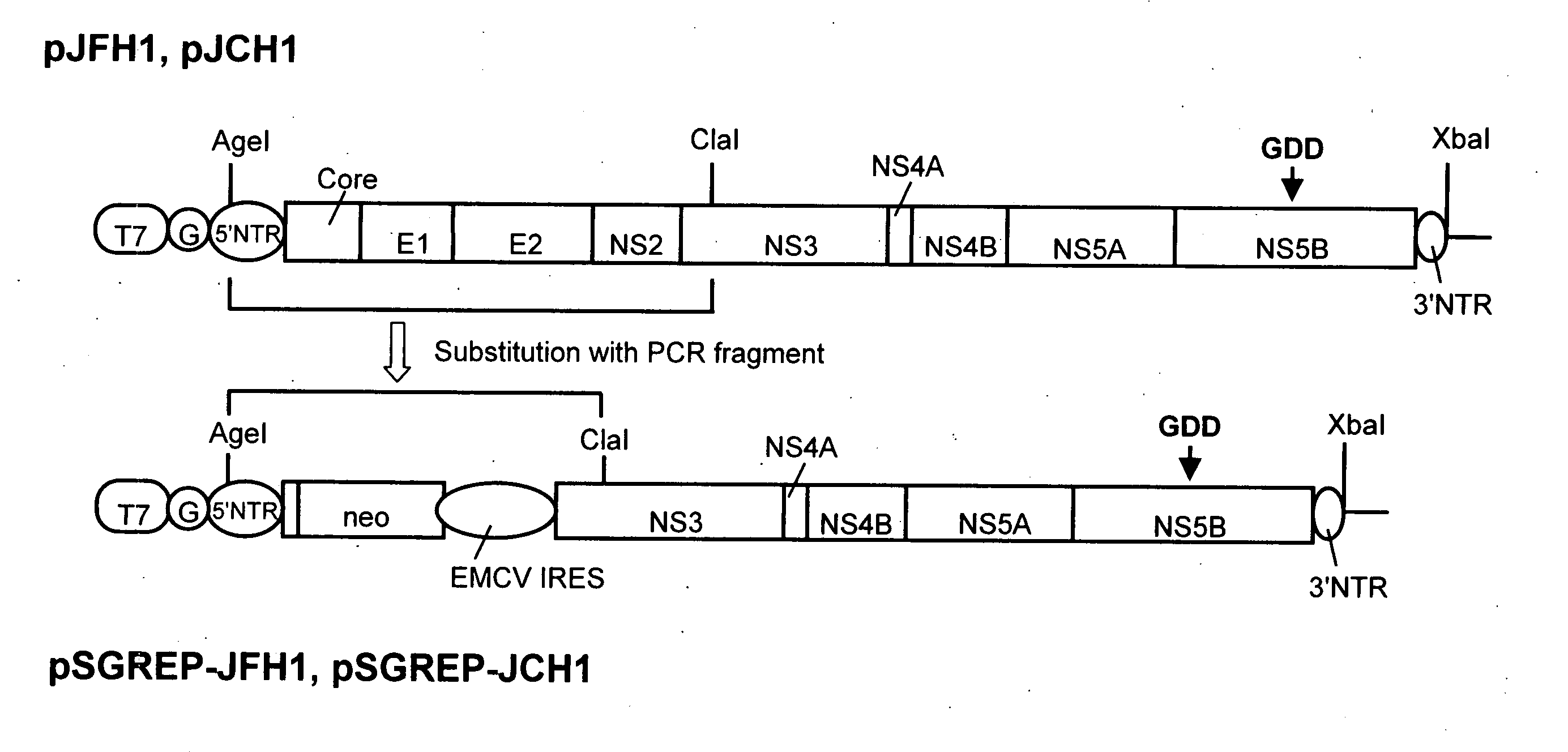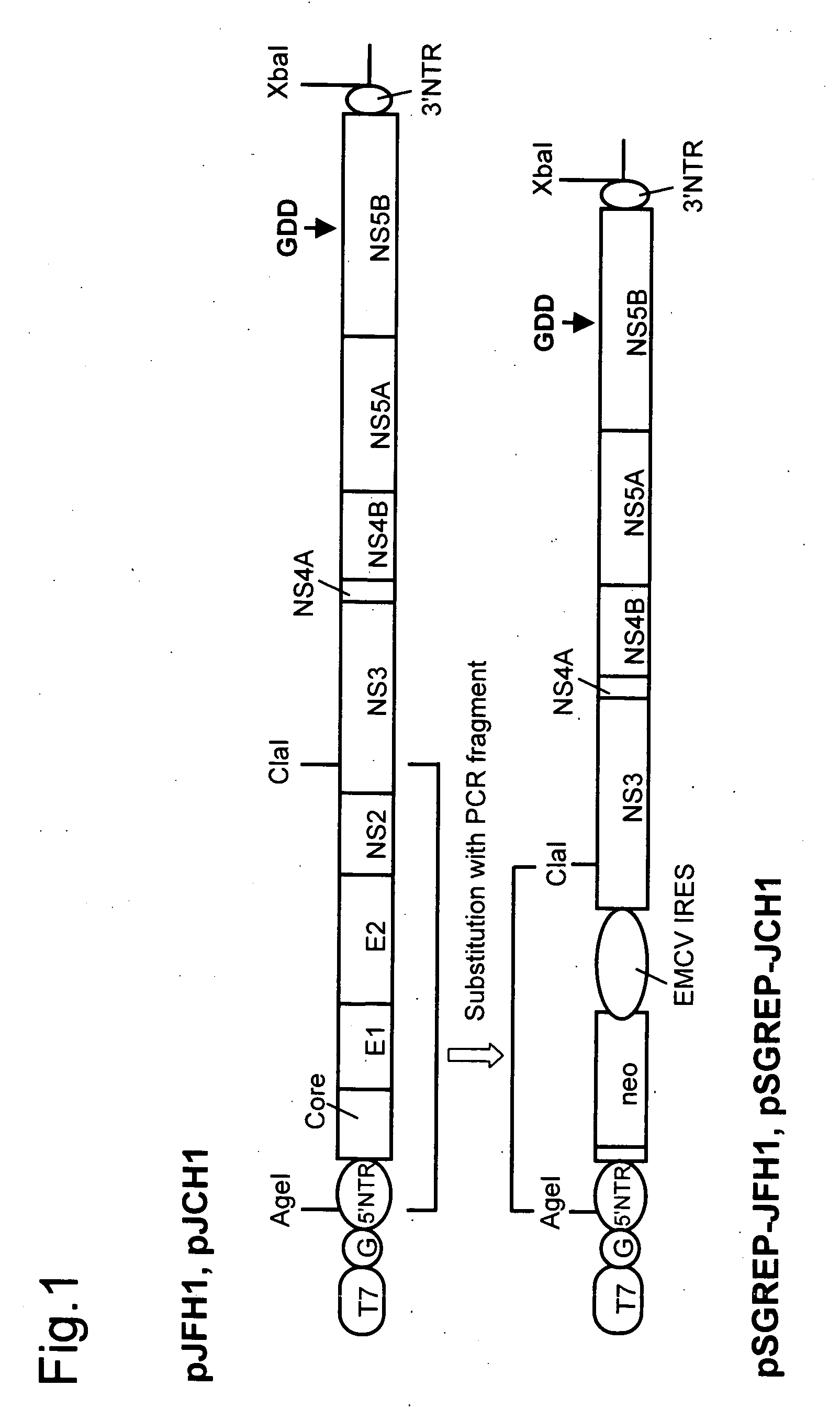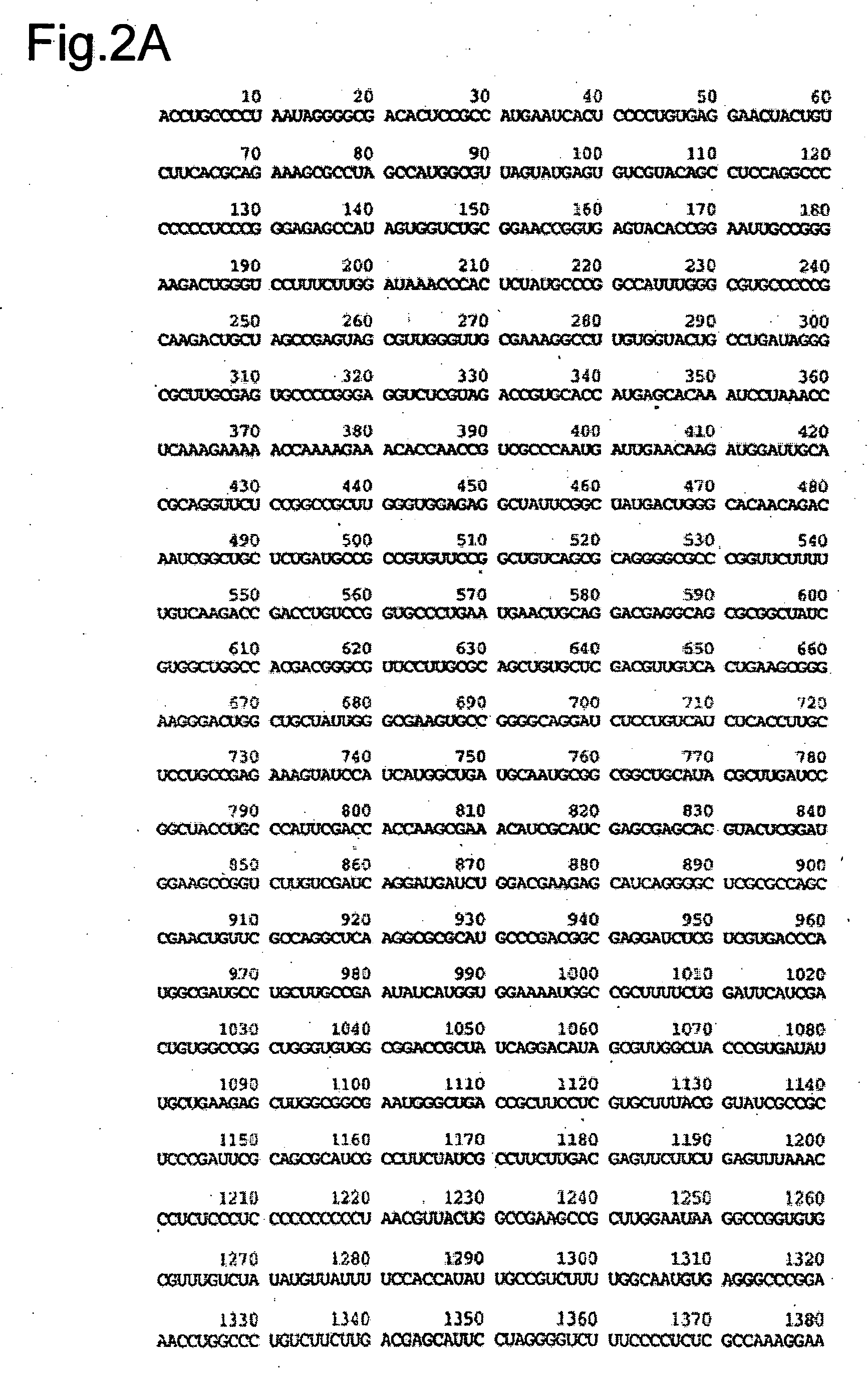Nucleic Acid Construct Containing a Nucleic Acid Derived From the Genome of Hepatitis C Virus (Hcv) of Genotype 2A, and a Cell Having Such Nucleic Acid Construct Introduced Therein
- Summary
- Abstract
- Description
- Claims
- Application Information
AI Technical Summary
Benefits of technology
Problems solved by technology
Method used
Image
Examples
example 1
Preparation of Replicon RNA
(A) Construction of Expression Vector
[0131]DNA corresponding to the entire region of viral genome of hepatitis C virus JFH-1 strain (genotype 2a) that had been separated from patients with fulminant hepatic failure was obtained from a JFH-1 clone containing the full-length genomic cDNA of the virus strain. The DNA was inserted downstream of T7 RNA promoter sequence that had been inserted in pUC19 plasmid. The thus constructed plasmid DNA is hereinafter referred to as pJFH1. Similarly, DNA corresponding to the entire region of viral genome of hepatitis C virus JCH-1 strain (genotype 2a) that had been separated from patients with chronic hepatitis was obtained from a JCH-1 clone containing the full-length genomic cDNA of the virus strain. The DNA was inserted downstream of the T7 RNA promoter sequence that had been inserted in pUC19 plasmid. The thus constructed plasmid DNA is hereinafter referred to as pJCH1. In addition, the preparation of the above JFH1 c...
example 2
Establishment of Replicon-Replicating Cell Clone
(C) Transfection of Replicon RNA, Determination of Colony-Forming Ability of Transfected Cells and Establishment of Cell Clones
[0141]Each of the above-synthesized replicon RNAs (rSGREP-JFH1, rSGREP-JCH1, rSGREP-JFH1 / GND and rSGREP-JFH1 / dGDD) was mixed in different quantities with total cellular RNA extracted from Huh7 cells so as to have a total RNA quantity of 10 μg. Subsequently, the mixed RNA was introduced into Huh7 cells by the electroporation method. The Huh7 cells subjected to the electroporation treatment were seeded into culture dishes, and then cultured for 16 hours to 24 hours. G418 (neomycin) was then added to the culture dishes at different concentrations. Thereafter, culture was continued while exchanging the culture solutions twice a week. After 21 days of culture following seeding, surviving cells were stained with crystal violet. The number of stained colonies was counted, and then the number of colonies obtained per μ...
example 3
(E) Re-transfection of Replicated Replicon RNA Derived from Replicon-Replicating Cells
[0148]From the replicon-replicating cell clones that had been established by transfection of rSGREP-JFH1 into Huh7 cells according to descriptions of Example 2, total RNA was extracted by a standard procedure. The number of copies of the replicated replicon RNA contained in the cellular RNA was determined by Northern blot analysis and a quantitative RT-PCR method.
[0149]Northern blot analysis was performed according to the description in Molecular Cloning, A laboratory Manual, 2nd edition, J. Sambrook, E. F. Fritsch, T. Maniatis, Cold Spring Harbor Laboratory Press (1989). Specifically, RNA extracted from the cells was subjected to denaturing agarose electrophoresis. After electrophoresis, the RNA was transferred onto a positively charged nylon membrane. The 32P-labeled DNA or RNA probe prepared from pSGREP-JFH1 was hybridized to the RNA transferred to the membrane as described above. Next the membr...
PUM
| Property | Measurement | Unit |
|---|---|---|
| Current | aaaaa | aaaaa |
| Volume | aaaaa | aaaaa |
| Volume | aaaaa | aaaaa |
Abstract
Description
Claims
Application Information
 Login to View More
Login to View More - R&D
- Intellectual Property
- Life Sciences
- Materials
- Tech Scout
- Unparalleled Data Quality
- Higher Quality Content
- 60% Fewer Hallucinations
Browse by: Latest US Patents, China's latest patents, Technical Efficacy Thesaurus, Application Domain, Technology Topic, Popular Technical Reports.
© 2025 PatSnap. All rights reserved.Legal|Privacy policy|Modern Slavery Act Transparency Statement|Sitemap|About US| Contact US: help@patsnap.com



